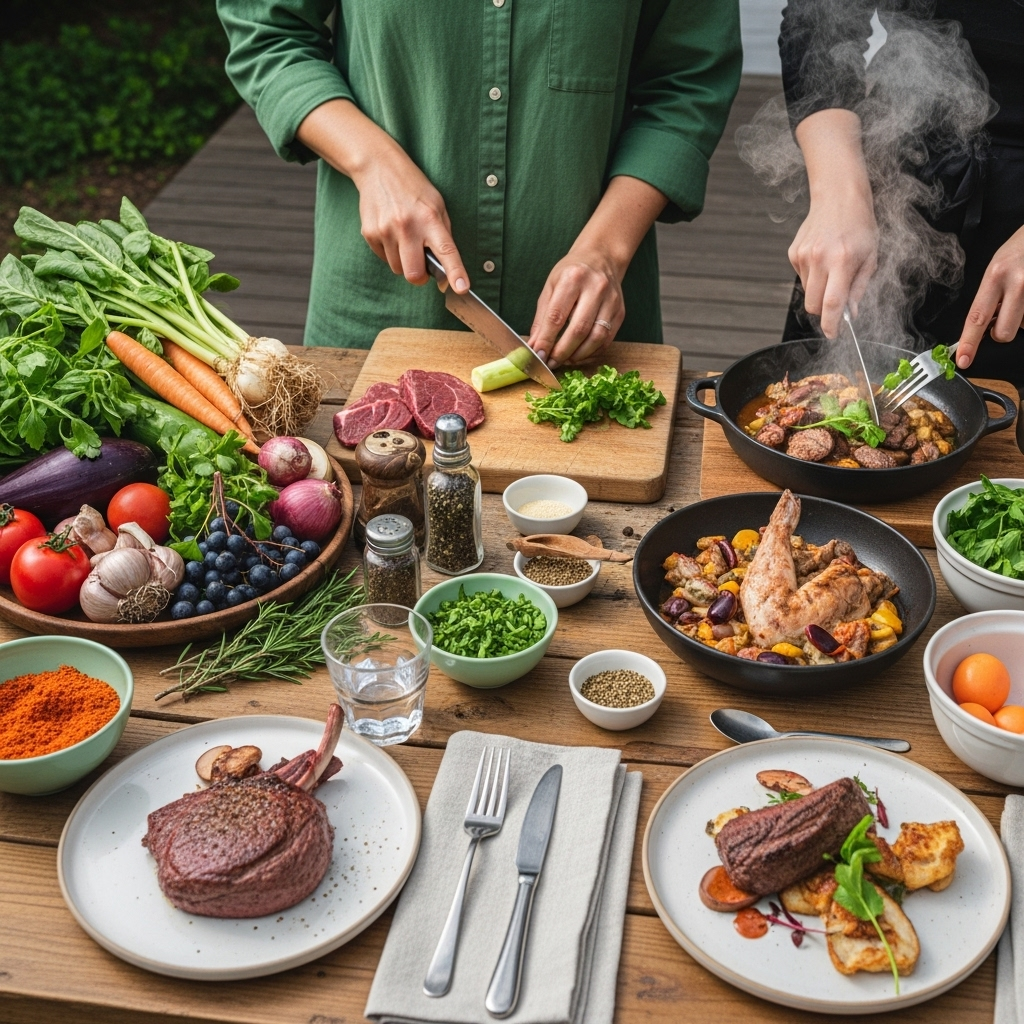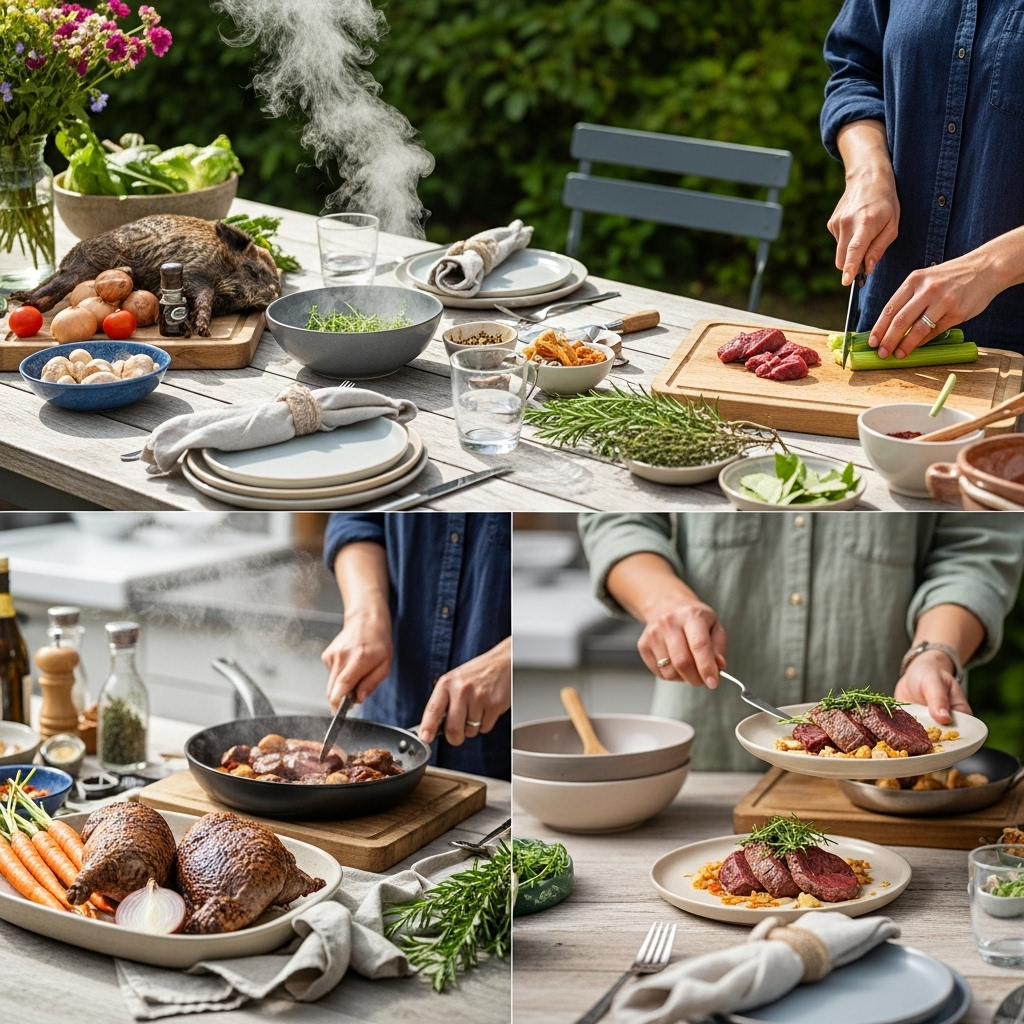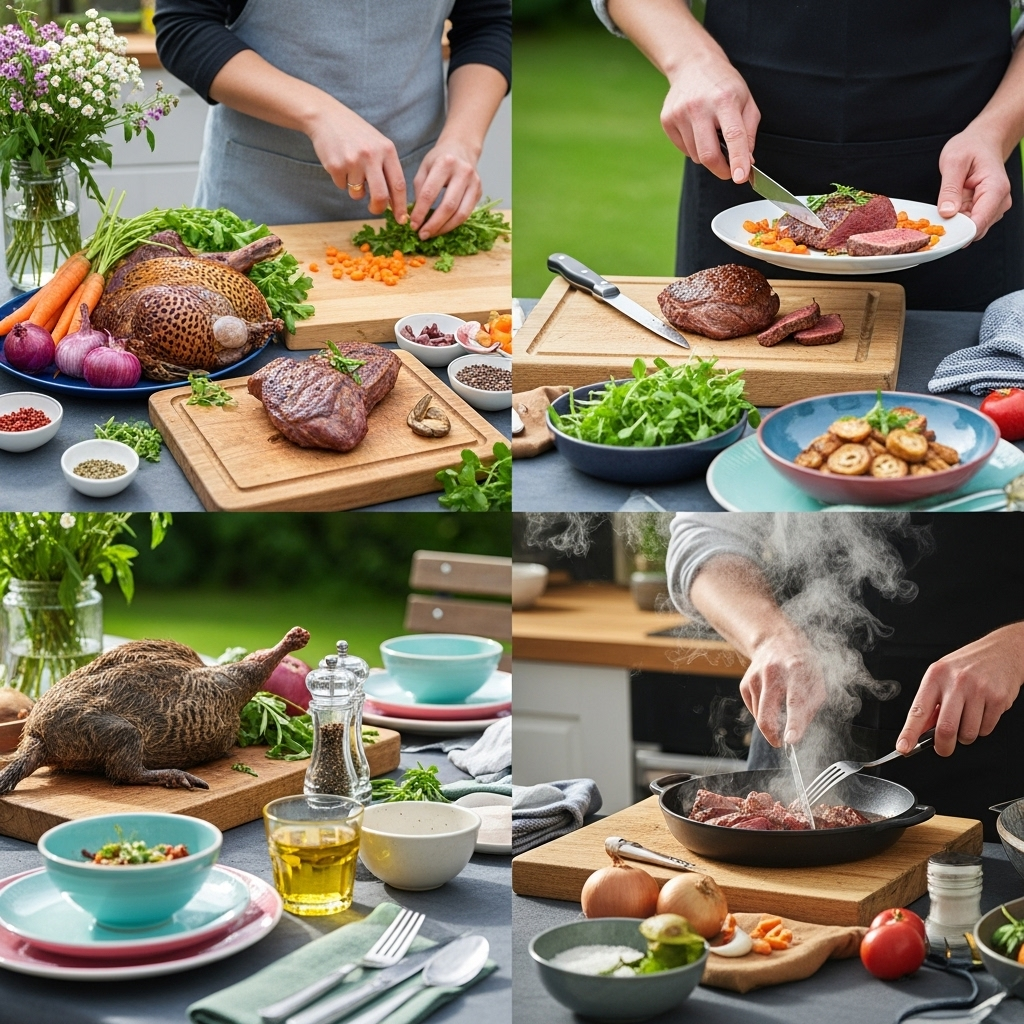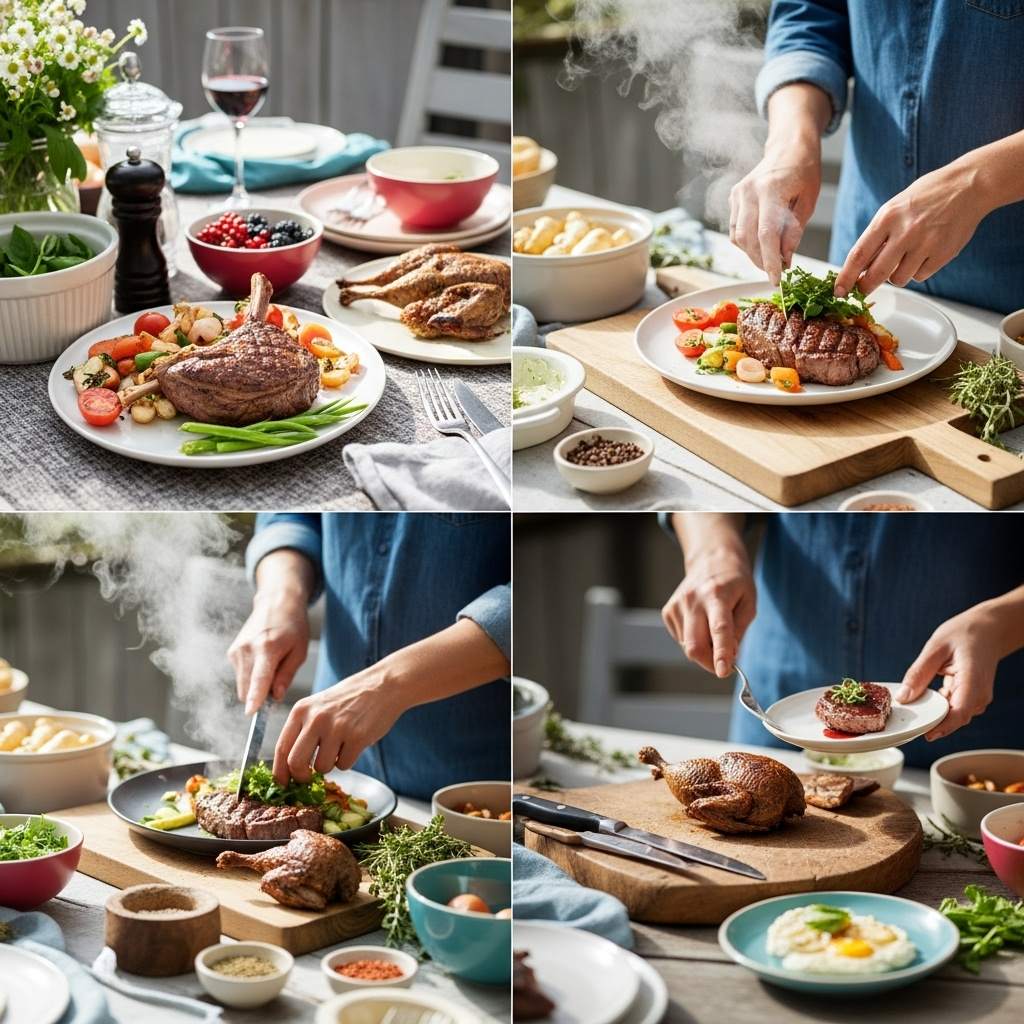Learn essential wild game cooking skills to transform surprising ingredients into delicious, everyday meals. This guide covers fundamental techniques, from safe handling to flavor enhancement, making your taste of the wild a success.
Ever looked at a freshly harvested piece of game and wondered what to do next? It’s a common feeling! Wild game, while incredibly flavorful and nutritious, can seem a little intimidating for beginners. The good news is that with a few key skills, you can confidently turn any cut into a mouthwatering dish. Think of it as unlocking a new level of deliciousness right in your own kitchen! This guide is designed to make those first steps easy, fun, and totally achievable.
We’ll walk you through everything you need to know, from understanding different types of game to mastering the best cooking methods. Get ready to impress yourself and your loved ones with incredible wild game cuisine!
Why Sign Up for a Wild Game Cooking Class?
Attending a wild game cooking class is more than just learning recipes; it’s about gaining a foundational understanding that opens up a world of culinary possibilities. For home cooks, especially those new to preparing game, these classes provide structured learning and hands-on experience that can be hard to replicate at home. You get expert guidance, can ask questions in real-time, and often taste the results of your efforts, solidifying your learning.
The benefits are numerous:
- Demystifying the Unknown: Game meats often have unique textures and flavors. A class teaches you how to handle them properly, avoiding common pitfalls like dryness or gaminess.
- Building Confidence: Stepping into the kitchen with unfamiliar ingredients can be daunting. A class provides the tools and knowledge to feel confident in your abilities.
- Learning Versatile Techniques: You won’t just learn one recipe. You’ll discover methods applicable to various cuts and types of game, from lean venison to richer waterfowl.
- Understanding Flavor Pairings: Game benefits from specific herbs, spices, and accompaniments. Classes often highlight these ideal flavor combinations.
- Safe Handling Practices: Proper hygiene and handling are crucial with any meat, and game has its own considerations. A class ensures you’re up-to-date on best practices.
- Networking and Community: You’ll meet other enthusiasts, share experiences, and build connections within the wild game cooking community.
Investing in a class is an investment in your culinary skills and your enjoyment of nature’s bounty.
Essential Skills You’ll Learn in a Wild Game Cooking Class

A good wild game cooking class will equip you with a core set of skills that are transferable and fundamental. These aren’t just about following a recipe; they’re about understanding the why behind each step. Mastering these essentials will allow you to adapt recipes and handle different types of game with ease.
1. Safe and Proper Meat Handling
This is non-negotiable for any cook, but especially important when dealing with wild game, which may not have undergone the same rigorous inspections as commercially raised meats. Understanding these principles ensures food safety and helps maintain the quality of the meat.
Key Aspects of Meat Handling:
- Hygiene: Always wash your hands thoroughly with soap and water before and after handling raw meat. Clean all surfaces, utensils, and cutting boards that come into contact with the meat.
- Temperature Control: Keep game meat chilled until you’re ready to cook and refrigerate or freeze leftovers promptly. The USDA recommends refrigerating perishable food within two hours.
- Preventing Cross-Contamination: Use separate cutting boards and utensils for raw game and other ingredients like vegetables.
- Thawing: The safest ways to thaw game meat are in the refrigerator, in cold water (changing the water every 30 minutes), or in the microwave if cooking immediately. Never thaw at room temperature.
2. Understanding Different Cuts and Types of Game
Wild game isn’t a monolith; it encompasses a wide variety of animals, each with distinct characteristics and preferred cooking methods. Different cuts from the same animal also require different approaches.
Common Types of Game and Their Characteristics:
| Type of Game | General Characteristics | Best For |
|---|---|---|
| Venison (Deer) | Lean, mild to medium flavor. Can be tough if overcooked. | Roasts, steaks, stews, ground meat. |
| Wild Boar | Rich, slightly sweeter flavor than pork. Can be fatty. | Roasts, pulled pork, sausages, braises. |
| Rabbit | Mild, slightly sweet flavor. Lean meat. | Stewing, braising, frying (often breaded). |
| Waterfowl (Ducks, Geese) | Rich, distinct flavor, often fattier than other game. Dark meat. | Roasting, confit, pan-searing breasts, rich stews. |
| Upland Birds (Pheasant, Quail) | Delicate, mild flavor. Lean and can dry out quickly. | Roasting, pan-searing, stuffing. |
Understanding Cuts:
- Tender Cuts: Found in less-worked muscles (e.g., backstrap/loin, tenderloin, upper leg in some animals). Best for quick-cooking methods like searing, grilling, or pan-frying.
- Tougher Cuts: Found in more exercised muscles (e.g., shoulder, shank, ribs, flank). Benefit from slow, moist cooking methods like braising, stewing, or smoking to break down connective tissues.
3. Trimming and Preparing the Meat
Proper trimming removes excess silverskin, fat, and connective tissue that can negatively impact texture and flavor. It also prepares the meat for optimal cooking.
Steps for Trimming:
- Sharpen Your Knife: A sharp boning or fillet knife is essential for clean cuts.
- Identify Trim: Locate the tough, white, sinewy layer known as silverskin. Also, trim any overly thick layers of fat (unless you intend to render it) or large pieces of connective tissue.
- Make Shallow Cuts: Hold the silverskin taut with your non-dominant hand. Insert your knife tip under the silverskin and make long, shallow passes, angling the blade slightly upward.
- Remove Excess Fat: Trim away any hard, white fat that you don’t want. Softer fat closer to the muscle can often be left for flavor and moisture.
- Neaten the Edges: Trim any ragged edges for a more uniform shape, which helps with even cooking.
4. Seasoning and Flavor Enhancement
Wild game has a unique character, and the right seasonings can either complement or overpower it. Understanding this balance is key.
Key Seasoning Principles:
- Salt is King: Properly salting your game meat well in advance of cooking (forming a brine with its own juices) can significantly improve moisture and flavor.
- Acids are Friends: Marinades containing acidic elements like vinegar, wine, or citrus can help tenderize tougher cuts and add brightness.
- Herbs and Spices: Game pairs well with robust herbs like rosemary, thyme, sage, and juniper berries. Earthy spices like pepper, paprika, and mustard also work wonders.
- Balancing Gaminess: If you find game too “gamey,” consider marinades with strong flavors or ingredients like garlic, onion, and bay leaves, which can help mellow the flavor. Cooking with fatty elements like bacon can also add richness and mask strong flavors.
5. Selecting the Right Cooking Method
The cut and type of game dictate the best cooking method. Using the wrong technique can result in a tough, dry, or unappetizing dish.
Matching Methods to Cuts:
- Quick, High-Heat Methods (Searing, Grilling, Pan-Frying): Ideal for tender cuts like backstrap, tenderloin, or steaks from the hindquarter. Cook to medium-rare to retain moisture.
- Slow, Moist-Heat Methods (Braising, Stewing, Slow Cooking): Perfect for tougher cuts like shoulder, shank, or ribs. Long cooking times break down collagen, making the meat tender and succulent.
- Roasting: Suitable for larger cuts like a whole loin or leg, and also for whole birds like duck or pheasant. May require basting or covering to prevent drying.
- Smoking: Excellent for larger cuts and richer game meats like wild boar or duck, imparting a deep, smoky flavor.
A general guideline: If a cut benefits from being fork-tender and falling apart, choose slow, moist heat. If it’s naturally tender and doesn’t have much connective tissue, opt for faster cooking methods.
6. Achieving the Perfect Temperature
Overcooking is the number one enemy of tender, flavorful game meat. Using a meat thermometer is crucial for ensuring your game is cooked to the right internal temperature for safety and optimal texture.
Temperature Guidelines (Always use a thermometer!):
| Type of Game | Cut | Desired Internal Temperature (Fahrenheit) | Notes |
|---|---|---|---|
| Venison | Steaks, Loin | 130-135°F (Medium-rare) | Rest for 10 mins. Can go up to 145°F (medium) but risks dryness. |
| Venison | Roasts | 135-140°F (Medium-rare) | Rest for 15-20 mins. |
| Wild Boar | Steaks, Roasts | 145°F (Medium) | Pork can be safely consumed at medium, but game boar may benefit from slightly lower for tenderness. Check specific recommendations based on age. |
| Rabbit | All Cuts | 160°F | Leaner meat, benefits from moist cooking methods. |
| Waterfowl (Duck, Goose) | Breast | 130-135°F (Medium-rare) | Skin should be rendered crispy through cooking. |
| Waterfowl (Duck, Goose) | Legs, Thighs | 170-180°F | Requires slow cooking for tenderness. |
| Upland Birds (Pheasant, Quail) | Whole or Breast | 160-165°F | Lean birds, avoid overcooking. Rest is important. |
Note: Temperatures are for raw or undercooked meat. Always follow current USDA guidelines for food safety, especially when dealing with wild game. You can find more detailed information on the USDA Food Safety and Inspection Service website.
Remember that the temperature will rise a few degrees as the meat rests (carryover cooking), so pull it from the heat just before it reaches your target temperature.
7. Resting the Meat
This is a simple technique that makes a HUGE difference in the final texture and juiciness of your game. It’s often overlooked but is absolutely essential.
Why Resting Matters:
- When meat cooks, the muscle fibers tighten and push moisture towards the center.
- If you cut into the meat immediately, this concentrated moisture will spill out onto the plate, leaving the meat dry.
- Resting allows the muscle fibers to relax and the juices to redistribute evenly throughout the meat.
How to Rest:
- Remove the cooked meat from the heat source.
- Place it on a clean cutting board or a warm plate.
- Tent it loosely with foil to keep it warm but not to steam it.
- Rest times vary:
- Small cuts (steaks, chops): 5-10 minutes
- Larger cuts (roasts): 15-20 minutes
- Whole birds: 10-15 minutes
Don’t skip this step! It’s the secret to a moist and tender result.
Beyond the Basics: What Else to Expect
A comprehensive wild game cooking class will often go a step further, introducing you to more advanced techniques and considerations that elevate your cooking.
Marinating and Brining
While mentioned under seasoning, dedicated instruction on marinating and brining is common. You’ll learn about different types of marinades (acid-based, oil-based, enzymatic) and when to use them. Dry brining (salting ahead of time) will be explained as a less messy alternative that enhances flavor and moisture retention.
Sauces and Accompaniments
A perfectly cooked piece of game shines even brighter with the right sauce or side dish. Classes often cover how to make complementary sauces from pan drippings, stocks, or reductions. You’ll learn about classic pairings, like cranberry or berry sauces with venison, or mushroom or cream sauces with pheasant.
Dealing with Organ Meats (Optional but Valuable)
Some classes may touch upon the preparation of organ meats like liver, heart, or kidneys. While not for everyone, these are highly nutritious and can be delicious when prepared correctly. You’ll learn about their unique cooking times and flavor profiles.
Smoked or Cured Game
If the class focuses on preservation or a specific style of cooking, you might get an introduction to smoking or curing techniques. This could involve basic smoker usage, wood chip selection, or simple curing methods for sausages or jerky.
Tools You Need for Wild Game Cooking

While you don’t need a professional setup, a few key tools will make your wild game cooking journey much smoother and more enjoyable. Many of these are staples in any well-equipped kitchen.
- Sharp Knives: A good chef’s knife, a boning knife, and a paring knife are essential for trimming, portioning, and general prep.
- Cutting Boards: Have separate boards for raw game and other ingredients to prevent cross-contamination.
- Meat Thermometer: An instant-read digital thermometer is your best friend for ensuring perfect doneness.
- Cast Iron Skillet/Dutch Oven: Excellent for searing, braising, and slow cooking game meats. They offer superior heat retention.
- Tongs: For safely handling meat during cooking and flipping.
- Roasting Pan: For oven roasting larger cuts or birds.
- Foil and Parchment Paper: For wrapping, tenting, and steaming.
- Spice Grinder/Mortar and Pestle: For fresh spices and rubs.
Investing in quality tools, especially a good thermometer and sharp knives, will make a noticeable difference in your results.
Finding a Wild Game Cooking Class Near You
The best way to find a class is to research local resources. Many culinary schools, community colleges, and even some outdoor recreation outfitters offer specialized courses. Online searches using terms like “wild game cooking class [your city/state]” can be very effective. Check out:
- Local Cooking Schools: Many offer introductory or specialized classes.
- Community Colleges: Continuing education departments often have culinary programs.
- Outdoor & Sporting Goods Stores: Some host classes or workshops, especially those catering to hunters.
- Butcher Shops: Specialty butchers sometimes host classes to teach customers about different cuts.
- Farmers Markets or Local Food Organizations: They might have connections to chefs or instructors offering game preparation workshops.
- Online Culinary Platforms: While less hands-on, some platforms offer game cooking courses.
Don’t limit yourself geographically if you’re willing to travel for a unique experience. Sometimes a destination class can be a fantastic culinary adventure!
Frequently Asked Questions About Wild Game Cooking

Q1: Is wild game safe to eat?
A1: Yes, when harvested and handled properly. Safe handling practices, proper cooking temperatures, and sourcing from reputable hunters or suppliers are key to ensuring safety.
Q2: How do I get rid of the “gamey” flavor?
A2: The “gamey” flavor comes from fat and specific compounds in the meat. You can reduce it by trimming excess fat, marinating (especially with acidic ingredients), using strong herbs and spices, or cooking with fatty elements like bacon or butter.
Q3: Can I substitute game meat in my favorite beef or pork recipes?
A3: Yes, often you can! Leaner game like venison can replace beef in stews or roasts, but you might need to add extra fat (like bacon or oil) or adjust cooking times to prevent dryness. For tougher cuts, adjust cooking methods to slow and moist.
Q4: How long can I store wild game meat?
A4: Safely stored in the refrigerator at 40°F (4°C) or below, fresh game meat generally lasts 3-5 days. For longer storage, freezing is
